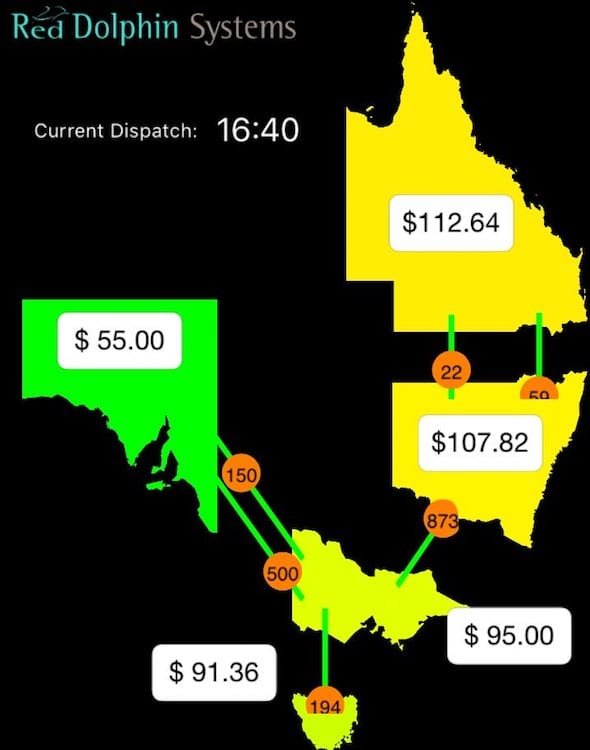A series of Tweets from Simon Holmes à Court, who is currently a senior advisor to the University of Melbourne-based Energy Transition Hub, has demonstrated that variability in energy generation on the National Electricity market is not the preserve of renewable resources. Far from it.
As we have pointed out on RenewEconomy on a number of different occasions, the unscheduled failure of ageing coal units can be far more difficult to navigate for the Australian Energy Market Operator than forecast changes in wind power generation and cloud cover, or the daily fact of the sun going down at the end of every day.
Even the nation’s newer coal plants are not immune. In January this year, for example, the NSW grid had to be protected from the possible failure of Queensland’s most modern coal plant, as it melted in the summer heat.
The issues of Monday afternoon, however, don’t appear to be due to any extremes in weather.
Rather, as Holmes à Court notes, a pertinent example of what can go wrong with fossil fuel energy generation, even as so many in Australia’s Conservative political and media circles continue to argue that it is coal power is an essential ingredient to a reliable electricity supply.
coal being reliable: 1 unit down at bayswater, 1 down at yallourn, 2 down at loy yang A, 1 down at gladstone, kogan creek limping. pic.twitter.com/7xmEi0PIOh
— simon holmes à court (@simonahac) November 6, 2017
here’s coal being reliable *again*
bayswater power station dropped 630MW this afternoon with no warning. the NEM is having a bad day! pic.twitter.com/uIGNXbtBjk— simon holmes à court (@simonahac) November 6, 2017
…and here’s what ‘bayswater unit 1’ did to the grid frequency (4 minute range). pic.twitter.com/CCDJSn9JW7
— simon holmes à court (@simonahac) November 6, 2017
came from a friend with power quality meter.
some info on freq here. looks like AEMO’s been struggling a bit.https://t.co/fgH5RX0GmQpic.twitter.com/RSsgUhLCy9— simon holmes à court (@simonahac) November 6, 2017
These are important issues.
Not only does AEMO have to rely on these generators to help keep the lights on over summer, when demand gets much higher, there is also the issue about the proposed National Energy Guarantee, and what Ross Garnaut fears might be a conflating of the idea that “baseload” equals reliability, and that it might also been dispatchable.
What’s the point of a policy that forces people to pay for services from the most unreliable generators in the grid?








